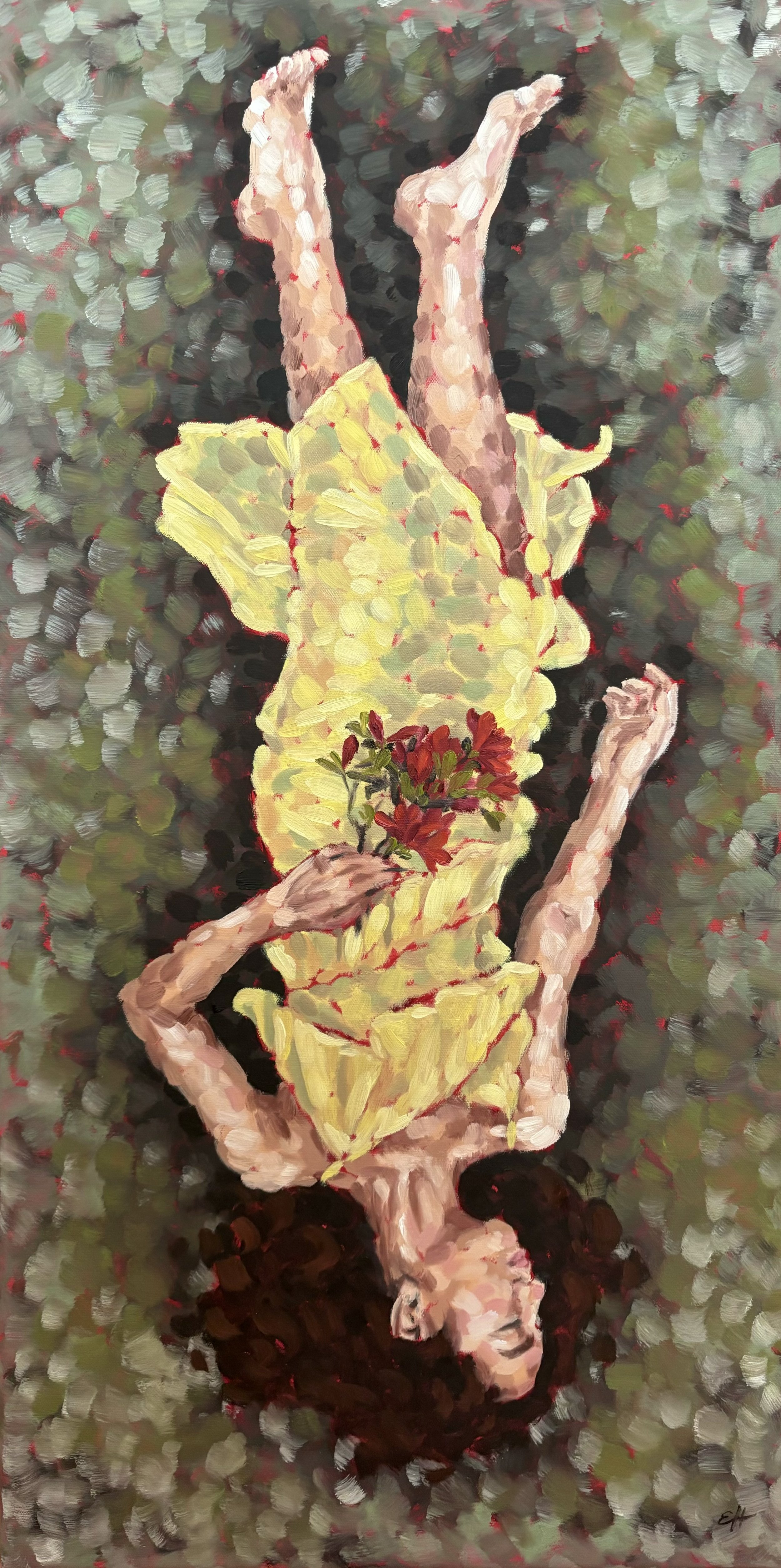Submissions are open for Volume 41: In-Between!
AZALEA BY XIBIN ZHANG
VOLUME 40: MIRRORS
COVER BY SHAE MEYER, ARHS
2025 PRIZE WINNERS
ART PRIZE: Eliza Henne’s
“Self-portrait as Bloom/Bleed”
Combining harmonious colors with impasto brushstrokes, Henne’s oil painting presents a stunning portrait that simultaneously displays feminine beauty with the not-so-hidden anguish of fertility to create a perceptive vision: a woman in her entirety. – Chloe Onorato, Editor-in-Chief
NOTE FROM THE EDITOR
Dear Reader,
Early last October, FOLIO invited you to peer into Nietzsche’s void and report what you see. We have now amassed a great collection of submissions from those who probed its depths and returned with wide and bright eyes. This FOLIO edition, “Mirrors,” showcases what those viewers saw.
Some writers saw reflections of society. Strains of history around the globe were captured in sharp, sparkling poems and stories in which people and places are frozen in time, for better or worse. Wars endure without end, skyscrapers grow taller and brighter, and beach towns and prairies retain their peace and quiet. Technology reflects on itself to progress at breakneck speed, nonperishables remain uncannily static, and furniture is a staple no matter where it’s needed. Islands and mountains continue their half-sunken and half-risen existence. The wisdom of therapists and children is still the most honest reflection. Guns galvanize action, and cats are sacred. In gazing we see how much time has passed and how fossilized our existence has become.
Other writers found themselves mirrored in relatives. Mother and fathers feature prominently. A reflective surface is unnecessary to see your joie de vivre in your father’s smile, to justify your rage as also your sister’s, to brave surviving because your brother is there beside you, to remember to eat and sleep because of your mother’s furrowed brow. Pets, too, become altered reflections, from vigilant felines and cautious dogs to jiving goldfish. At times, the distinction between animal and anthropoid is a hazy reflection.
Yet most writers discovered reflections of themselves – in a pool, a car window, an equation, a fruit, a bookshelf, in prayers, in robots, in rivers, a work of art, in dreams. Sometimes a less ominous abyss, an unknown depth or facet of ourselves catches the light, glimmers in our eye, and we cannot help but follow to see what the origin of the radiance is. Imagine our surprise when a familiar face gazes back. Our own, and so much more.
Mirrors are the ultimate test of truth. This issue celebrates what it means to see yourself in others and the world in you. We hope our readers see familiar images reflected back in the careful, quirky, heartbreaking, soul-searching, and breathtaking art, which is as Shakespeare said, a mirror held up to nature.
My special thanks to the staff of FOLIO and its faculty advisors for their endless support and enthusiasm. If not for their hours, weeks, and months of labor, this issue would not be the same.
Thank you for reading,
Chloe Onorato, Editor-in-Chief
FOLIO is a nationally recognized literary journal affiliated with the College of Arts and Sciences at American University in Washington, DC.
Since 1984, we have published original creative work by both new and established authors. Past issues have included work by Roxane Gay, Michael Reid Busk, Franny Choi, Billy Collins, Ivan Pinkava, Hettie Jones, William Stafford, Bruce Weigl, Yumi Sakugawa, and Ross Gay, as well as interviews with Carmen Maria Machado, Michael Cunningham, Allen Ginsberg, Charles Baxter, Amy Bloom, Ann Beattie, Walter Kirn, and Marie Howe.
With over 40 years of history, FOLIO is proud to continue publishing great work.




